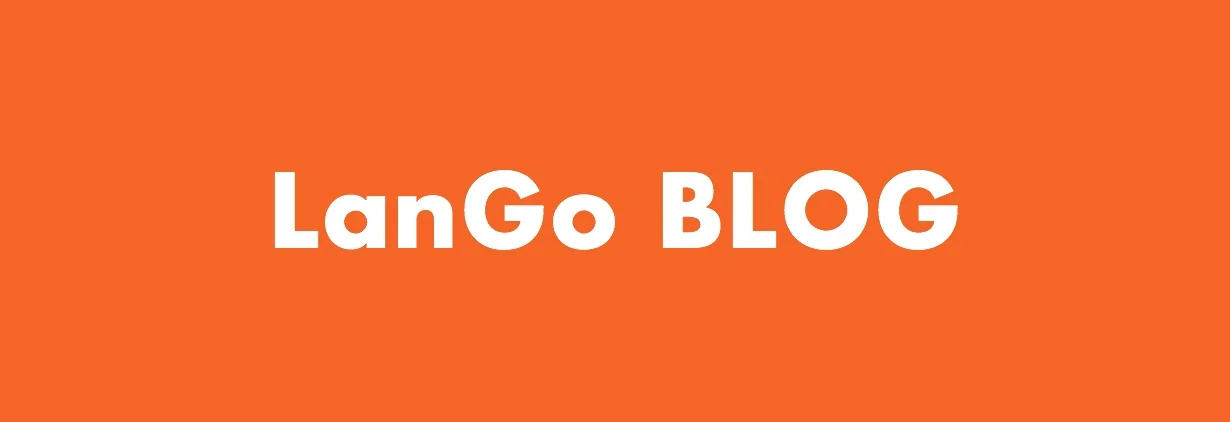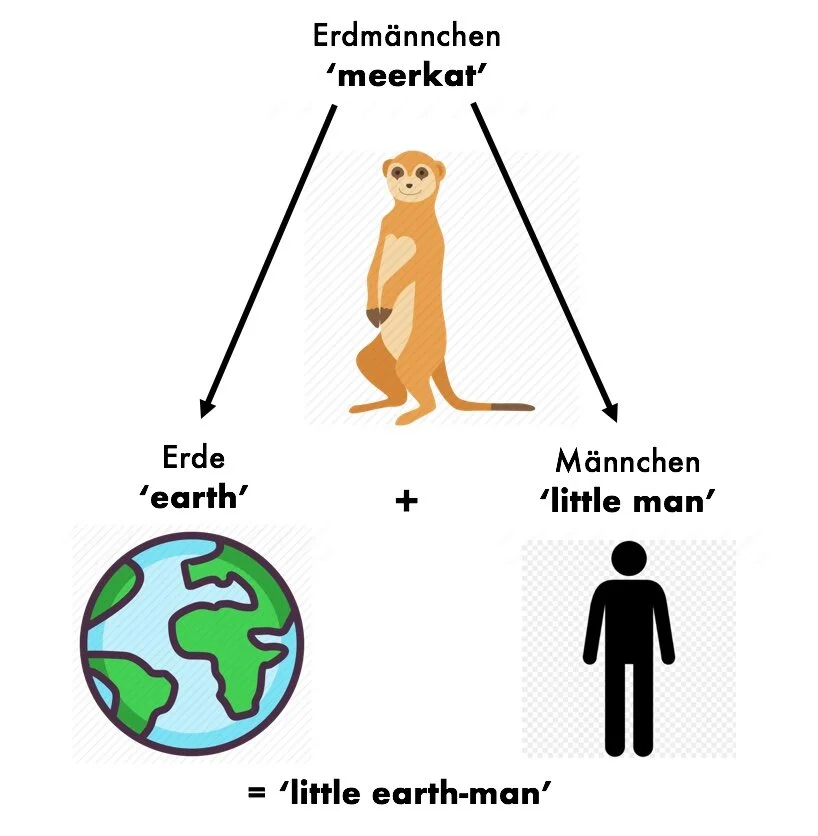Lights, Camera, Action!
We are so proud of our summer English student, Iñigo. Along with mastering the beginner basics of English, for his final project, he wrote, directed, and starred in his own sci-fi movie trailer! 📸: LanGo Institute.
Learning a new language comes with its challenges and obstacles, and learning English is no exception. When studying a new language for the first time, there are many aspects for learners to acquire and comprehend: lexicon (vocabulary), pragmatics, morphology, syntax, semantics, and phonetics. One of our English learners tackled one of these aspects this summer--phonetics--and by doing so, he improved his English pronunciation skills within a few weeks. And we hope that reading this will inspire you to practice your pronunciation in English or whatever other language you’re studying!
Scene 1: English Pronunciation, Speaking and Listening Skills
By Kendall Mila
This summer, our new student Iñigo enrolled in classes with us at LanGo and began his English studies. He was interested in improving his overall pronunciation, speaking skills, and listening comprehension. In order to best help him, our instructors taught him all of the sounds used in American English by incorporating the IPA (International Phonetic Alphabet) into the lessons. It is important when studying a new language to start with the basic building blocks (e.g., individual sounds) to build a solid foundation in that language.
By first mastering the sounds of a new language, students can see that spelling does not always consistently convey pronunciation. In languages like Spanish, the pronunciation of a word is more easily derived from its spelling. In English, however, a single sound can be spelled in several ways. Iñigo was able to practice many challenging sounds in English. For example, he learned that the sound /ʃ/ can be found in the following words, its spellings shown by the bolded letters: social, machine, chateau, share, sugar. Even though the sound remains the same (/ʃ/), the spelling is variable. Furthermore, sometimes a single consonant in English can have more than one pronunciation. For example, the letter <g> is pronounced differently in a word like “judge” (pronounced /dʒʌdʒ/) versus a word like “garage” (pronounced /gəraʒ/).
When Iñigo started classes at LanGo, he began to learn about topics like English pronunciation through studying the IPA. Another reason that it is important for learners to discover the sounds of a second language is lets them can recognize which sounds exist in their native language and which are not present in the target language. For example, in Spanish, the letters <b> and <v> are both pronounced /b/ and /β/, intervocalically for the latter; these letters are important for distinguishing between words in Spanish. Our student Iñigo had to practice producing the new English sound for the letter <v>, the voiced labiodental fricative /v/. He was able to practice these new sounds using minimal pairs: "berry/very", "bat/vat", "boat/vote". By isolating sounds and comparing them to sounds we already produce every day, we can work on tricky pronunciation issues.
Iñigo and LanGo intern Marison working on IPA vowel symbols and corresponding example words.
English through Film
Iñigo had the chance to learn about English pronunciation through a non-traditional classroom (no textbooks, tests, or grades). By taking the pressure out of the classroom, Iñigo could be himself, and the lessons focused on his personal interests and goals for learning English. For instance, since Iñigo’s future ambitions and career goals relate to film and media, the lessons were tailored around these interests.
During class, Iñigo reviewed short videos and movies and discussed the characters, plot, and theme of each film. One film that he watched over the course of a couple of classes was Howl's Moving Castle since Iñigo loved films by Studio Ghibli. Because Iñigo had seen this film in Spanish, he knew the overall story fairly well. He was able to easily discuss the characters,their motivations, and the plot in English. He also wrote about each character, important places the characters travel to, and significant plot points in his (student-generated) booklet. This film covered different genres (romance, comedy, action), so Iñigo was able to learn about and discuss these themes. It was equally important to not only write and speak in English but to create a love of language learning that involved Iñigo's hobbies and passions--film.
While studying at LanGo, Iñigo began his own film project. During class, he started to write the script for his movie. Because of his love for the sci-fi genre, he chose to create this type of film. He began writing this script during class and also discussing his ideas as the film's writer and director. He wanted to shoot a movie trailer based upon a Martian landing on Earth. For more about Iñigo's continued studies and to see the final version of his movie trailer, continue reading below.
Scene 2: English Vocabulary and Putting It All Together with Personalized Final Projects
By Tyler Paul Utt
Iñigo playing a vocab review game with Levi, LanGo intern.
Vocabulary
It was when Iñigo was expressing himself freely--talking about his interests, his directorial vision, and trying to formulate new questions--that we were able to identify the gaps in Iñigo’s English wordstock. One of the many things that Levi, LanGo’s intern who was present for four of Iñigo’s sessions, was helpful with was creating vocabulary flashcards. Whenever we had to look up a new word in the course of speaking, or define one we encountered in a reading, we would take the occasion to prepare a vocab card, first by writing the target word to be learned on one side. Once a few dozen prepped cards had accumulated, we would go through all these cards with Iñigo and he would himself add two more essential elements for a successful flashcard: the meaning (shown with a Spanish equivalent, or two when needed), and the pronunciation (shown in IPA symbols).
Seeing the IPA transcription of words over and over helps the learner to build up associations of a given sound with the words in which it occurs, which in turn builds the foundation for future vocab learning. With the tools Iñigo acquired and practiced at LanGo, he is now empowered to pronounce new English words he looks up using an online or good print dictionary, without having to hear someone else pronounce it.
Making such flashcards for vocab study can be used in more than one way to contribute more to a student’s mastery of target items. As one of the first items every day, I would review all the distinct vowel phonemes of English, sounds and symbols, and condense these into two charts (one for long vowels, one for short). Then, once the chart was assembled, we would sort the flashcards according to their stressed vowel: a word like “bed” would go into the /ɛ/ pile, while a 2-syllable word like “pillow” would go into the pile for /ɪ/, which bears the main stress (PIL-low, not *pil-LOW). At the end of this exercise, the student has neat little piles of words separated by their main vowels; reviewing them, s/he will get to associate the various spellings with their common sound.
With Iñigo, it seemed more important to spend time on vowels than on consonants, and this is due to systematic differences between his first language, Spanish, and the target language, English. Every language has its own set of distinctive speech sounds (vowels, consonants, and in some cases tone), and it has unique ways of combining these sounds into words and phrases. In consonants, there is a lot of overlap between the Spanish set and the English set: for example, the sounds /p b t ʧ d k g f s m n w/ are shared by all dialects of both languages. Each language has some sounds that the other lacks: Spanish has /β r ɲ x/ while most forms of English do not, and English has /v θ ð z ʃ ʒ ɹ/ which are not distinctive sounds in American varieties of Spanish. But because consonants involve contact (or approximation) of discrete articulators (such as the tongue tip, the back of the teeth, the ‘roof’ of the mouth and others), it is relatively simple to teach students the way to approach an unfamiliar consonant sound. For instance, once Iñigo understood the concept of voicing contrast, he was very quick to grasp that /s/ is to /z/ as /p/ is to /b/ -- that is, both members of each pair share place and manner of articulation, but differ in the feature of voice.
With vowels, the matter becomes less clear-cut and therefore a bit harder for learners to acquire. Instead of differing by points of contact or approximation, vowels (in both Spanish and English) are distinguished by varying degrees of aperture, by lip rounding, and by tongue position. Add to this the fact that Spanish has only five distinctive vowel phonemes, versus the 7 short + 5 long vowels of English (this long/short distinction itself is alien to Spanish), not to mention additional diphthongs (double-vowel sounds) and syllabic resonants (consonants acting as vowels).
To understand the problem learners such as Iñigo face in learning English vowels, consider the following analogy. Suppose your job is to understand the color system used by a culture other than your own. English has 11 color terms, that is, basic words whose primary sense is to refer to a specific band of the visible light spectrum; but the culture you study divides that spectrum into 60 distinct, non-overlapping terms. That likely means that what we English-speakers call “red” is translatable by five or six distinct words, and that the culture has no label corresponding to our word “red”. Using this new system correctly means you have to learn not just 60 color terms, but exactly where on the spectrum one “color” ends and another begins.
Modern Spanish has just five vowel phonemes covering all of what we call the Vowel Space. So where English speakers distinguish the /æ/ of “hat” from the /ɑ/ or /ɔ/ of “hot” as well as from the /ʌ/ of “hut”, from the perspective of a learner in Iñigo’s position, these all sound like slightly differing shades of /a/. This is the reason that we spent most of our pronunciation sessions with Iñigo distinguishing between vowel sounds.
Another tool I gave Iñigo to master the vowels, particularly when he is called on to pronounce an unfamiliar new word, was a kind of “cheat sheet”. Given all the vagaries of English spelling, no single chart can reliably capture all current spellings of all vowel sounds, but I think I’ve developed one that’ll work most of the time.
We start by noting that native English speakers who have no linguistic training often refer to vowel phonemes with collocations like “long A” or “short A” to denote /ej/ and /æ/, respectively. The general rule of English is that if a vowel letter within a word is followed by two or more consonants, then that vowel is short (as in “bank”, for example: short A, which is /æ/); if it’s just one consonant following, and especially if that letter in turn is followed by E, then expect a long vowel (as in “name”: long A, which is /ej/). For the full cheat sheet, see the table below.
The sounds of English long and short vowels.
Two values are common for “short U”: rounded /ʊ/ in words like “put”, “full” with a labial initial consonant (this vowel sound is also commonly spelled <oo>), versus the unrounded /ʌ/ of words like “up”, “cut”, “tuck”.
Vocab Review Game: Frigatebird
This is one of my favorite word games, and we used for vocabulary review on Iñigo’s final class day. It is a variant of Scrabble that does not call for a board, just a flat surface and ABC tiles (the game Bananagrams is also suitable). A designated (who may also be a player) dealer lays out a handful of tiles, one by one, and players try to identify English words that can be spelled with the available tiles. There is a 4-letter minimum word length. When a player identifies a word, she claims the tiles needed by saying the word aloud and assembles the word in front of herself. A word that has been claimed is still in play: anyone, including the player who claimed a given word, can poach that word to form a new one using at least one new tile from those laid out by the dealer. There is one stipulation: the word resulting from the new addition cannot be related to the first word. For example, if Player 1 claims the word “TONE”, Player 2 can claim an S tile and form from these the words “STONE” or “NOTES”, but not the word “TONES”, because that is related to “TONE”, which was the input.
For learners, the benefit of playing this game is that it makes a fun way to recall words one has learned, whether recently or long ago, and it also offers many opportunities to learn new words when they are recognized by other players, whether they are native speakers or fellow language-learners. In set-ups with one or two teachers with a small number of students, I recommend taking the time to ask the student to tell a little bit about any words claimed: Do they know what it means, or refers to, or has to do with? What other words and concepts are related?
Film Project
Iñigo’s final project was a two-minute trailer for a sci-fi/action movie called “Galactic Fantasy.” The original concept was something Iñigo had had for several months, and involves a solitary astronaut named Max (played by Iñigo) set in a dystopian future ‘when mankind has destroyed the earth.’ [SYNOPSIS]
The first stage of production was the creation of a short script and comic-book-type storyboard illustrating Iñigo’s vision. Then, once he had equipped himself with a suitable costume (camouflage, a laser/bubble-gum pistol, and a very stylish helmet), our director turned his attention to an important ingredient in a sci-fi movie: the hero’s spaceship. Using LanGo’s Lego bricks, Iñigo built with incredible speed a very fine 6-inch model. As one of the shots to be filmed involved the ship being struck by a rock or meteor, the spaceship had to be consistently breakable and easy to repair, and Iñigo’s design proved ideal for this.
Still of Max the Astronaut, from “Galactic Fantasy”.
Shooting was spread across two days, the first for indoor shots and the second for outdoor. We filmed shots of our hero, Max, abruptly waking from sleep, with the small LanGo classroom serving as the interior of Max’s ship. To create the ambiance of a spacecraft, Iñigo showed great resourcefulness in turning two eraser-boards and an indented painter’s palette turned upside-down into control panels and graphic displays using markers.
For the outdoor shoot, we started with an establishing shot of Max’s ship touched down on a planet, and quickly followed that up with footage of the ship being damaged by collision with an unknown object. Then came a much trickier set of shots: Max, on the planet’s surface, falls to the ground, panting heavily, gets back up and takes in his surroundings; we get the sense that he is disoriented. A challenge we faced was avoiding showing too much of the school building or fence when the camera pulled out from close-up.
Presentation
After our two days of shooting, we had two days to edit the footage. Thanks to our intern Levi, we were able to share large video files, so while I inexpertly stumbled through assembling a cut of the movie trailer on iMovie, Iñigo, who is already an experienced editor and filmmaker, put together what turned out to be a far more gripping and compelling final product than I could ever have made.
As we waited for all of Iñigo’s family members to join us at LanGo for the final presentation, Levi and I played a word game to review vocabulary. Once everyone had arrived, we closed the shutters and gave the floor to Iñigo to introduce his creation. Using only English, Iñigo told us all about his concept for the movie and outlined the plot: Max, a lone astronaut in the distant future after humanity has destroyed the earth, crash-lands on an unknown planet and must figure out how to survive with no one else to turn to.
What planet will it turn out to be? We eagerly await Iñigo’s full science fiction movie, which we know will be filled with action, adventure, and suspense, and we hope that the only crashes he experiences on the road to making it will be fully planned and involve only special effects (Lego or otherwise)!































Tools for helping you master some of the trickier points of German grammar, whether you’re learning it for the first time or wanting to review the fundamentals. Los geht’s!